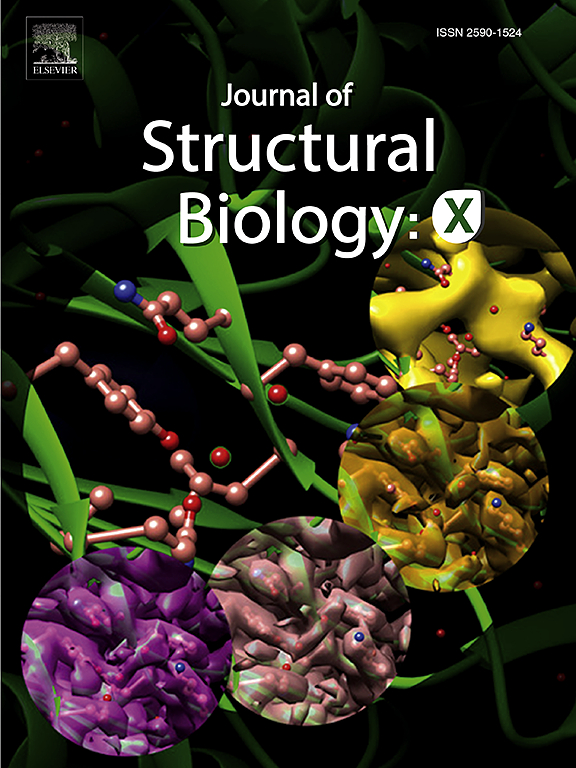Structure and self-association of Arrestin-1
IF 2.7
3区 生物学
Q3 BIOCHEMISTRY & MOLECULAR BIOLOGY
引用次数: 0
Abstract
Arrestins halt cell signaling by binding to phosphorylated activated G protein-coupled receptors. Arrestin-1 binds to rhodopsin, arrestin-4 binds to cone opsins, and arrestins-2,3 bind to the rest of GPCRs. In addition, it has been reported that arrestin-1 is functionally expressed in mouse cone photoreceptors. The structural characterization of arrestins was spearheaded by the elucidation of the crystal structure of bovine arrestin-1. Further progress in arrestin structural biology showed that the general fold of the four vertebrate arrestin subtypes is conserved and that self-association seems to play important physiological roles. In solution, mammalian arrestin-1 has been proposed to exist in a species-dependent equilibrium between monomers, dimers, and tetramers, the activated monomer being the form that binds to photo-activated phosphorylated rhodopsin. However, the nature and function of the oligomers of the different arrestin subtypes are still under debate. This article reviews several structural aspects of arrestin-1 in light of two recent crystal structures of Xenopus arrestin-1, which have provided insights on the structure, self-association, activation, and evolution of arrestins in general, and of arrestin-1 in particular.

Arrestin-1的结构与自结合。
阻滞蛋白通过与磷酸化激活的G蛋白偶联受体结合而停止细胞信号传导。捕集蛋白1与视紫红质结合,捕集蛋白4与视锥蛋白结合,捕集蛋白2,3与其他gpcr结合。此外,有报道称在小鼠视锥细胞光感受器中有功能表达的arrestin-1。阻滞蛋白的结构表征是由阐明牛阻滞蛋白-1的晶体结构率先。拦阻蛋白结构生物学的进一步进展表明,四种脊椎动物拦阻蛋白亚型的一般折叠是保守的,并且自关联似乎起着重要的生理作用。在溶液中,哺乳动物的arrestin-1被认为存在于单体、二聚体和四聚体之间的物种依赖平衡中,被激活的单体是与光活化磷酸化视紫红质结合的形式。然而,不同抑制蛋白亚型的低聚物的性质和功能仍在争论中。本文结合Xenopus arrestin-1最近的两种晶体结构,综述了arrestin-1的几个结构方面,为arrestin-1的结构、自结合、激活和进化提供了一些见解。
本文章由计算机程序翻译,如有差异,请以英文原文为准。
求助全文
约1分钟内获得全文
求助全文
来源期刊

Journal of structural biology
生物-生化与分子生物学
CiteScore
6.30
自引率
3.30%
发文量
88
审稿时长
65 days
期刊介绍:
Journal of Structural Biology (JSB) has an open access mirror journal, the Journal of Structural Biology: X (JSBX), sharing the same aims and scope, editorial team, submission system and rigorous peer review. Since both journals share the same editorial system, you may submit your manuscript via either journal homepage. You will be prompted during submission (and revision) to choose in which to publish your article. The editors and reviewers are not aware of the choice you made until the article has been published online. JSB and JSBX publish papers dealing with the structural analysis of living material at every level of organization by all methods that lead to an understanding of biological function in terms of molecular and supermolecular structure.
Techniques covered include:
• Light microscopy including confocal microscopy
• All types of electron microscopy
• X-ray diffraction
• Nuclear magnetic resonance
• Scanning force microscopy, scanning probe microscopy, and tunneling microscopy
• Digital image processing
• Computational insights into structure
 求助内容:
求助内容: 应助结果提醒方式:
应助结果提醒方式:


